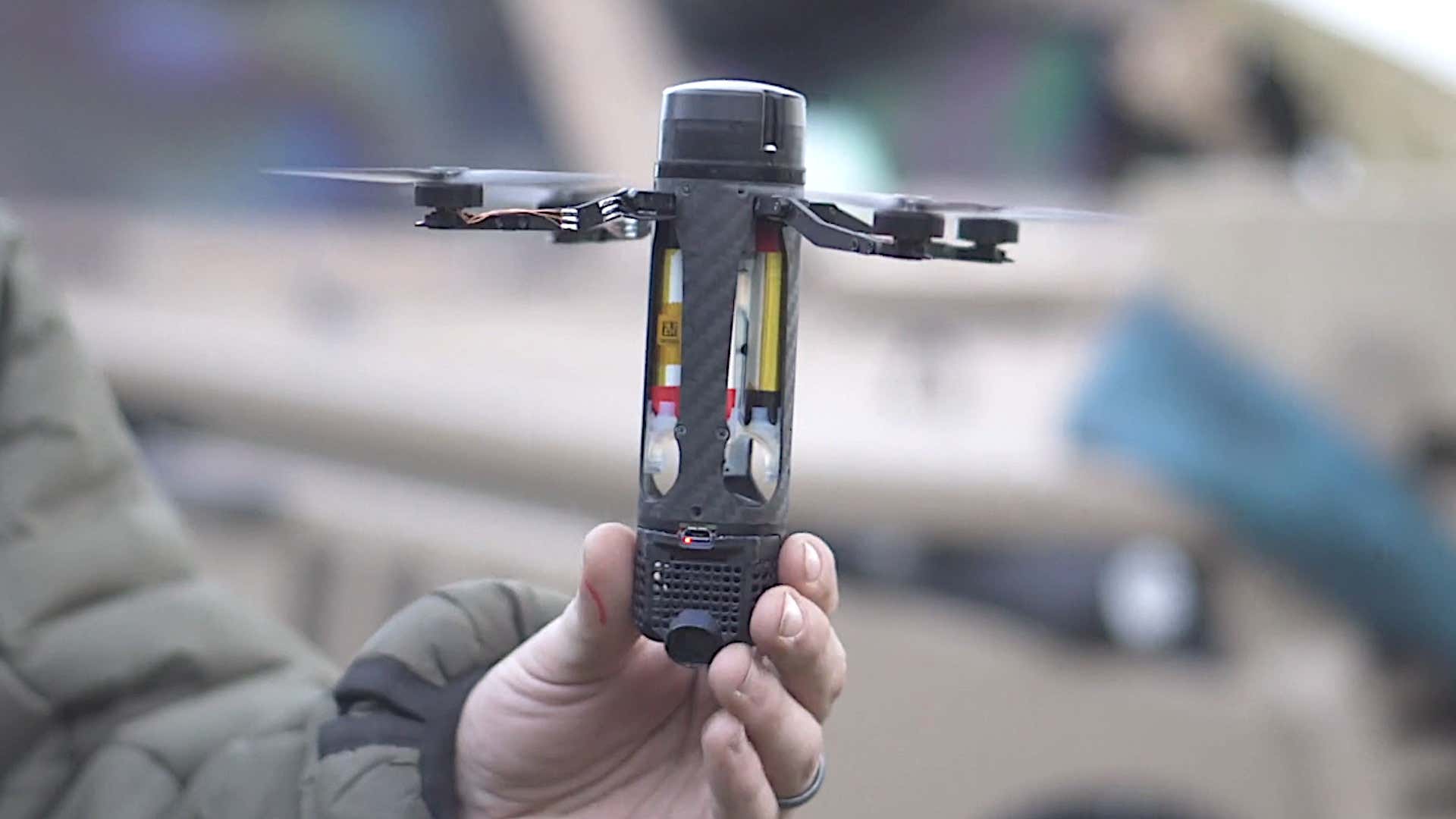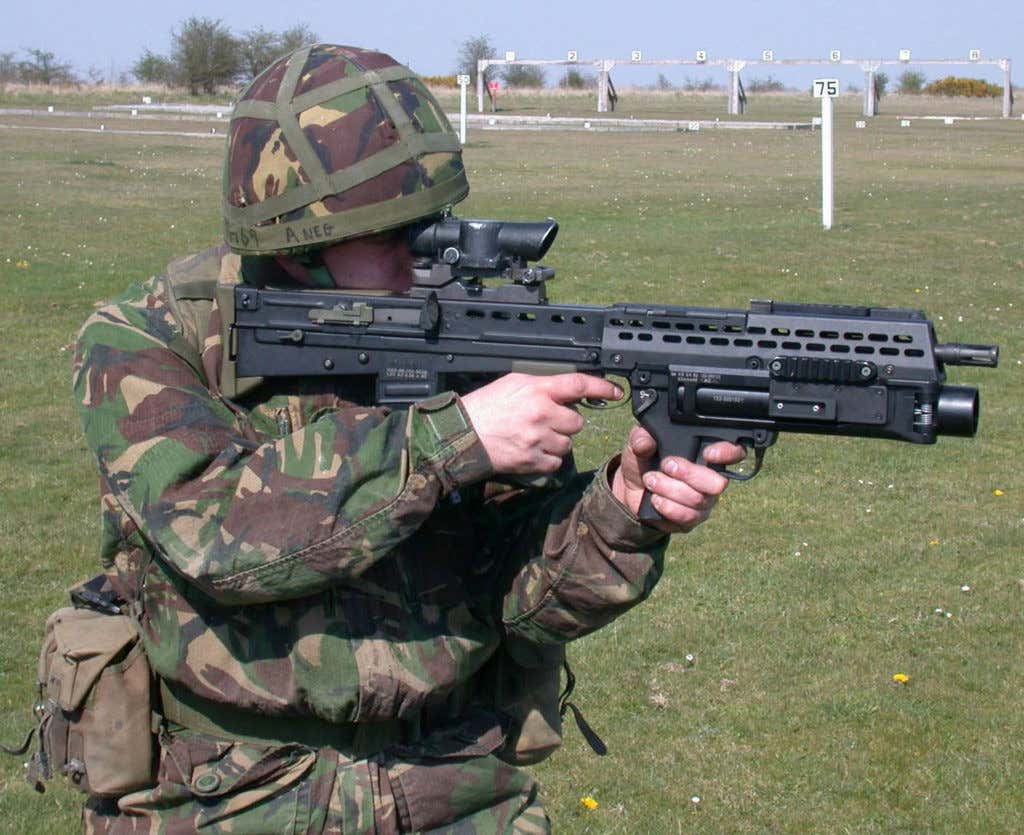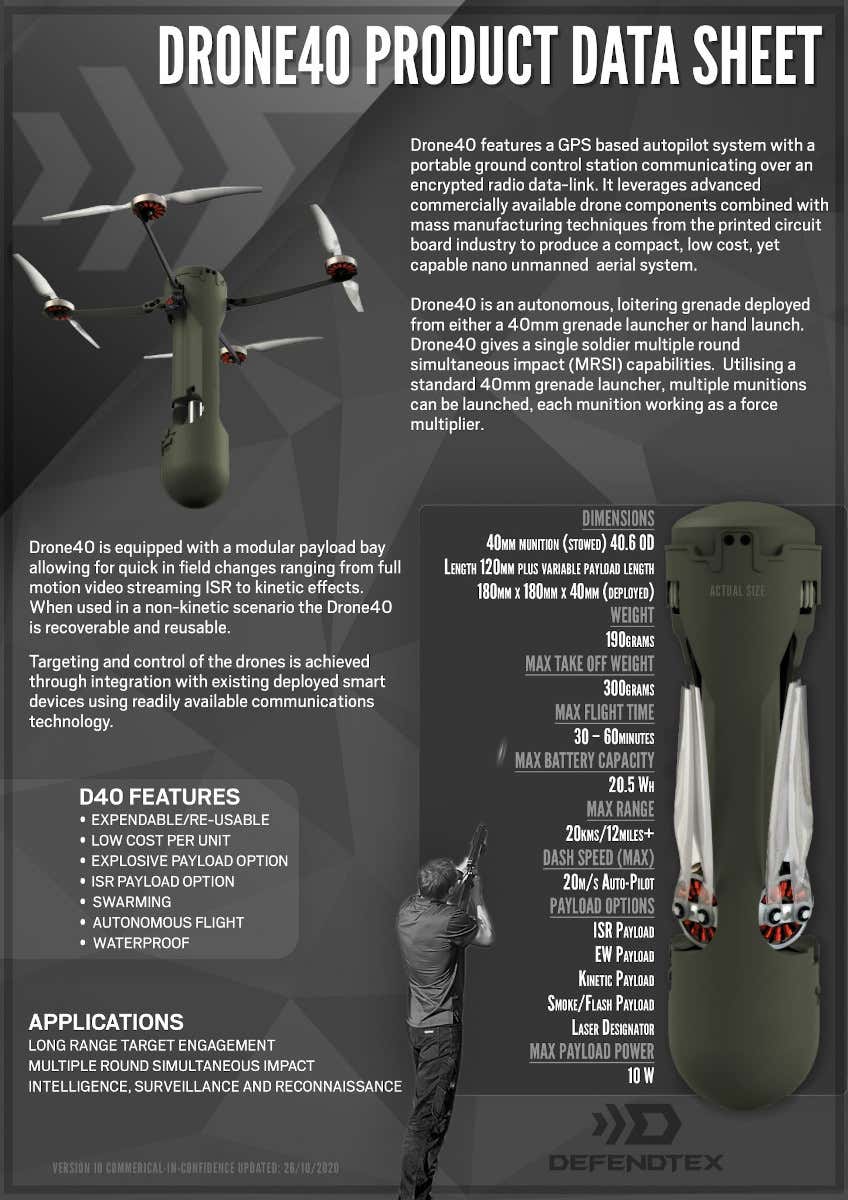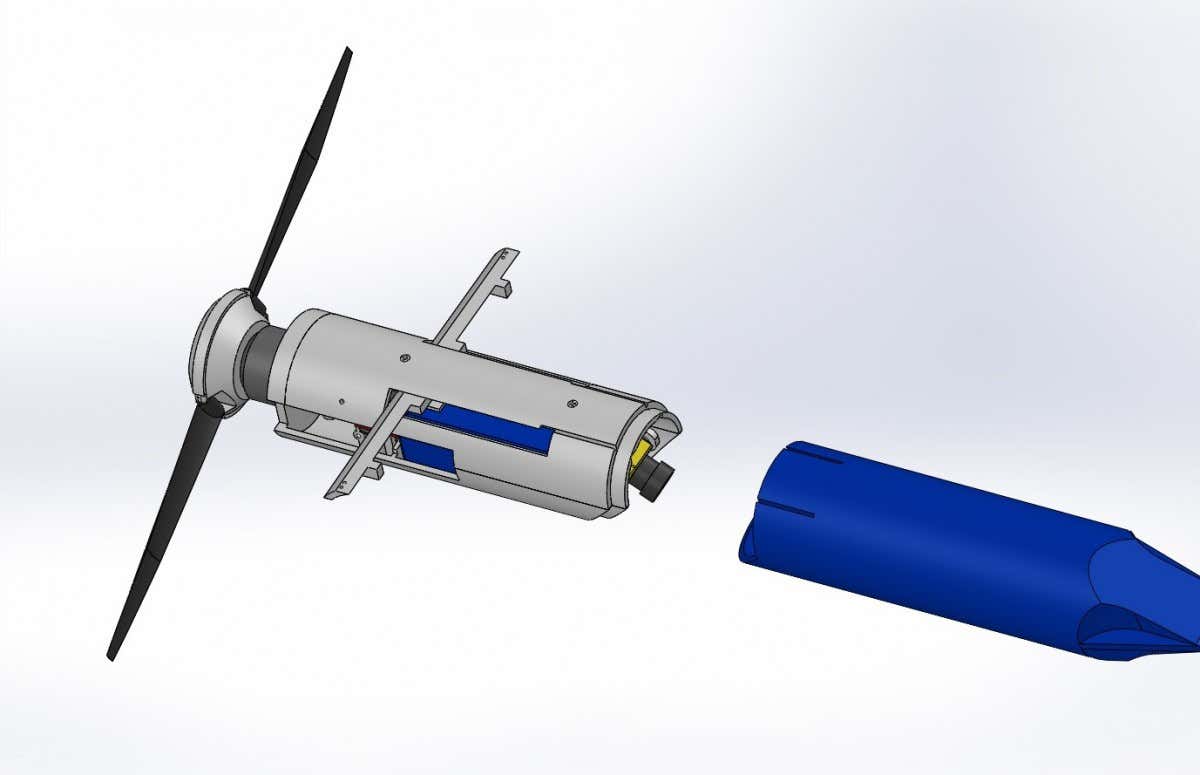The camera configuration by itself would be an obvious boon for troops, especially those operating in small units. Drone40s with these payloads offer a way to scout ahead for enemy forces or other hazards, especially in areas full of natural or man-made cover, such as dense urban environments.
In addition, though, DefendTex offers high-explosive and anti-armor warhead options, as well as smoke and less-than-lethal flash-bang payloads. There is also an option to fit the drones with small electronic warfare jammers or laser designators to mark targets.
These other payloads would give units equipped with Drone40s a host of other capabilities. Friendly units safely behind cover could send out armed examples to fly over enemy positions and launch attacks from above. They could also deploy smoke screens to shield their movements or jam enemy communications systems or sensors to confuse or disorient them. Laser pointer-equipped types could paint targets for other units to engage with precision-guided munitions.
On top of all this, DefendTex says that Drone40s can operate together as at least semi-autonomous swarms after launch. They also offer was it described as multiple round simultaneous impact (MSRI) capabilities.
What this means is that a single individual could fire multiple Drone40s with kinetic payloads and then they could be directed to fly to a designated point, after which they would all drop at the same time. With a mix of different warhead types, this could allow for more effective engagement of complex and dispersed targets all at once, such as troops standing in the open near light armored vehicles.
Combined with a camera-equipped type, the Drone40s could act as loitering munitions, hovering over a certain area, waiting for targets to emerge, and then being directed to engage them when they do. DefendTex says that the unmanned aircraft have a range of at least 12 miles and can remain airborne for 30 to 60 minutes, all depending on what type of payloads they’re carrying. Of course, line-of-sight restrictions exist for the command links between the operator and the drones, but it may be possible to use another drone to work as a relay.
For British troops in Mali, who are tasked with conducting patrols over broad areas in a region where various militant groups are very active, the benefits of just having small drones to provide additional immediate situational awareness are obvious. If they have received other types of payloads for their Drone40s beyond the camera package, it could provide them with an additional means of engaging enemies in the event of an ambush or any other kind of firefight.




